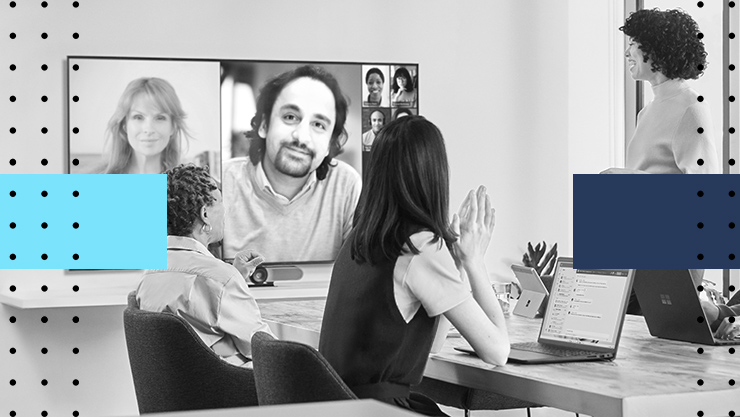
Building a Learning Culture for the Age of AI
with Joe WhittinghillJoe Whittinghill is the former Chief Learning Officer at Microsoft.

This is a show for anyone who cares about using digital approaches in the public sector to deliver better outcomes. We explore stories from around the world, where public servants have been successful at driving change. We meet the people behind the stories, to hear their first-hand experiences and lessons learned. Throughout the series we discuss technology and trends, as well as the cultural aspects of making change happen.
Joe Whittinghill is the Chief Learning Officer at Microsoft, where having a growth mindset is at the heart of the organization’s culture, and key to its success. He joins host Olivia Neal to share his lessons in building a learning culture across 220,000 employees, based in 115 different countries. Joe shares practical insights as well as perspectives on the neuroscience of learning and the role of AI, to help us keep up to date at a time when pace of change has never been quicker.
Click here for transcript of this episode.
Click here for the corresponding blog post for this episode.
Olivia Neal [host] | LinkedIn
Joe Whittinghill [guest] | LinkedIn
Microsoft Public Sector Center of Expertise for more information and transcripts of all episodes.
Discover and follow other Microsoft podcasts at news.microsoft.com/podcasts/.

Episode summary
Joe Whittinghill is the former Chief Learning Officer at Microsoft. He discusses his approach to building a learning culture across the organization of 220,000 employees, based in 115 different countries. He shares practical insights on how to keep up to date at a time when pace of change has never been quicker.
Building a Learning Culture for the Age of AI
Joe Whittinghill is the former Chief Learning Officer at Microsoft. He joins the podcast to share his lessons in building a learning culture and growth mindset across the organization of 220,000 employees, based in 115 different countries. He shares practical insights as well as perspectives on the neuroscience of learning, and the role of AI, to help us keep up to date at a time when pace of change has never been quicker.
The role of a Chief Learning Officer
Whittinghill explained what his role, and that of his team, entails, “We’re setting up learning organizations in every single group [across Microsoft], and so, one of my chief roles is to make sure that all of that works together in a very effective and efficient way. We also are responsible for leadership development, for employee development, manager development and just all things learning across the company.”
“We have employees in over 115 countries worldwide. So everything we do is this global scale, which makes it for me personally a great challenge to think about how do we reach all 220,000 Microsoft employees in the most effective way possible.”
What does having a learning culture mean?
Whittinghill outlined his perspective on the concept of a learning culture. “A learning culture refers to an environment that promotes and supports continuous learning and personal development. The organization values knowledge and skill building.”
“When you have a true learning culture, there is personalized learning, so the ability of the individual to find the learning that they need to complete their day job, and make sure that they are skilled in doing that, but also looking at developing skills for their next role or for as their role advances. And a component of that then is the learning assets have to be very discoverable, so it’s easy for people to find them. And then if you really, truly have a learning culture, the organization is constantly adapting and making sure that what is being provided is relevant.”
Whittinghill explained that within Microsoft, Viva Learning is an important part of enabling this approach “We have a single pane of glass that all employees start, and then they can go find either learning very specific for their role or generally to learn about growth mindset, learn about our culture, learn how to be a better colleague to someone or a better people manager or leader.”
Building skills at a time of rapid technological development
“We used to call it learning all the time, but a great definition now is, you know you have a learning culture when it’s an always-on learning environment.”
“We need to make sure that what we’re providing the ability for employees to understand about AI, or more specifically about particular products, or the ability to change how they’re interacting with customers or how they’re selling or how we’re marketing. We’re talking about really building the skills and abilities of all of us in the company so that we can be more successful, and of course, in turn, then our customers are more successful.”
Approaches to organization-wide learning
Whittinghill explained the layers of individual, team and company which he considers in building approaches to learning across a large organization.
“When we go to do training plans or learning plans we think about how we are using different implementation tactics and what is our aim. We always start with the learner and we think about our colleagues, our employees, and we say, are we really thinking about them as an individual, and what is the individual lived experience that employee is going to have as they are doing their job?”
“On the job is the best way to learn anything. And we know that. And so we want to make sure that employees understand – as you are getting better at doing something, if you’re experimenting with Copilot or actually using Copilot with your customers to get some task completed or an achievement completed, that in and of itself is learning.”
“Second, we look at teams… We have about 28,000 people managers that we have to reach all the time. So that next level we think about is how are the managers and their teams getting what they need to be successful.”
“And then the last one is when we’re going to go to the whole company. And so, we step back and say, if we have to reach every country, if we have to reach all 220,000 employees, that’s an enterprise move; what does that look like?”
Prioritizing time for learning
Whittinghill shared that “at my own group we have a learning day once a month, and that we use it in two half days, where we really focus on skill building and making sure that people are getting what they need to be successful.”
“My advice to everyone is if you want to keep up with the modern age of AI, if we aren’t all playing with Copilot and really understanding it and thinking through how AI is going to change not only our customers but ourselves, that’s where we’re going to start to have problems, and we’re going to fall behind because it is just an absolute imperative now that people are increasing their skills and knowledge every day.”
Understanding the neuroscience of learning
Whittinghill explained that his passion for understanding how people learn has helped to shape his approaches. “I’m an eager amateur neuroscientist. And so, we introduced the neuroscience of leadership about nine years ago into the company and versus saying, let’s talk to you first about how to lead, we said no, let’s first start with why do you think and feel the way you do? And that has helped in landing what does a growth mindset really mean… it’s a real mindset shift of how to be a continuous learner and to be more open-minded and be aware of your biases.”
“When we think about the neuroscience of learning is people have very short attention spans by nature. And partially the reason that is, is when you are super focused on any task, whether you’re reading or trying to complete something, it is burning a lot of calories. It’s actually just the brain needs to switch off from high intensity mode to low intensity mode about every 18 to 20 minutes. It can only go for so long.”
“You’ll notice trainings are getting shorter and shorter. So our formal trainings, we are absolutely asking all the learning teams to make sure that formal learning is as brief as possible, because it gives the learner time to absorb that, and then you can break it up and have a follow-on session if you need to.”
The role of technology within learning
Whittinghill outlined how he’s seeing technology play a role in learning approaches. “So this is what’s exciting. Last week, I had 46 Chief Learning and Talent Officers from the S500 on campus in Redmond. And when you look at the roles within major organizations, who’s ever the chief learning or the chief talent officer actually spends a tremendous amount of time thinking about technology.”
“But where we are now with AI is we are truly at the cusp of learning in the flow of work. So as you’re doing a task, where we’re going, like with Copilot is we will start to then prompt back to the learner and say to them, it looks like you’re trying to work on this spreadsheet; can we give you some help with that?”
Growth mindset and personal purpose
Whittinghill concluded by sharing advice for others, “I just hope everybody understands that in addition to having a growth mindset, number two is, get super clear on what your personal passion is, your personal purpose.”
“And the more you’re achieving that in your day job and helping the company be successful, but that you also feel satisfied and rewarded in the work that you’re doing, that’s really the big unlock when you have that binding of employees saying, I’m doing what I love to do, and I’m getting better every day at doing what I’m doing… That’s a win all around.”
Listen to this episode on any of these podcast platforms:
About the Center of Expertise
Microsoft’s Public Sector Center of Expertise brings together thought leadership and research relating to digital transformation in the public sector. The Center of Expertise highlights the efforts and success stories of public servants around the globe, while fostering a community of decision makers with a variety of resources from podcasts and webinars to white papers and new research. Join us as we discover and share the learnings and achievements of public sector communities.
Questions or suggestions?










